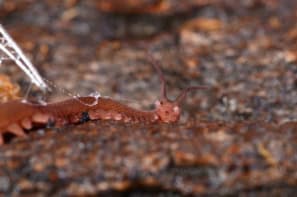
Gold nanorods are one of the most extensively studied nanomaterials and are beginning to be used in nanomedicine in applications such as cancer treatments and diagnostics. They are thought to be relatively non-toxic to cells, but a new study by researchers at the University of Western Australia (UWA) in Perth is now casting doubt on this.
Gold nanorods (GNRs) are employed to deliver payloads such as small drug molecules into targeted cells. They are ideal for use in nanomedicine because of their unique properties, which include the fact that they absorb light in the near-infrared part of the electromagnetic spectrum. This not only makes them suitable for deep tissue imaging but also for phototherapy.
The nanomaterials are usually synthesized with a non-covalently bound bilayer of cetyltrimethylammonium bromide (CTAB) that dissociates from the GNR surface under normal physiological conditions, making the GNRs toxic to cells. Researchers have overcome this problem by replacing CTAB with its thiolated analogue, (16-mercaptohexadecyl)trimethylammonium bromide (MTAB), which covalently binds to the gold surface and thus makes it non-cytotoxic. Or does it?
Researchers led by Nicole Smith of the School of Molecular Sciences at the UWA are now saying that they have the first experimental evidence that this thiol-based conjugation might not be so perfect after all.
Changes in gene expression profiles
Some previous studies have revealed that exposure to GNRs can result in changes in gene expression profiles but the mechanisms behind this were unclear. Smith and colleagues may now have discovered a pathway that could explain this phenomenon. Using a technique called nanoscale secondary ion mass spectrometry (nanoSIMS), the researchers have found that the Au-thiol species change following endocytosis, which results in the formation of Au(I)-thiolates that then localize in the cell nucleus. Such nuclear localization went hitherto undetected using high-resolution electron microscopy techniques, says Smith.
And that is not all: “When we then evaluated the toxicity profile of the GNRs in (HEK-293T and MCF-7) cells, we found that this localization perturbs the dynamic microenvironment within the nucleus. It thus alters gene expression in human (MYC, BCL2 and HNRPAB) cells as a result of leached gold species,” she tells Physics World.
“In our study, we focused on looking at the changes that occur in genomic DNA using ‘G4’ structures as a marker. We suspect that nuclear localization of gold may also affect the interactions and dynamics of other regulatory molecules (including transcription factors and histone proteins) with genomic DNA as a result of changes in the chemical microenvironment,” she adds.
Going beyond traditional cytotoxicity evaluations
“Our understanding of the subtle changes in genomic DNA has greatly expanded over the last decade and we now understand that alterations beyond the genetic code including epigenetic and structural alterations are indeed important markers that play pivotal roles in cell signalling and function. We obtained our results using quantitative visualization of ubiquitous DNA G-quadruplex structures, which are sensitive to ionic imbalances, as an indicator of the formation of structural alterations in genomic DNA.
“Our study, which is published in Nature Nanotechnology 10.1038/s41565-018-0272-2, provides clear evidence that to develop medically translatable technologies using gold nanoparticles and other inorganic nanostructures, we must explore in situ chemical changes within the context of the genomic environment in detail. Such studies need to go beyond the traditional ‘coarse’ cytotoxicity evaluations that have been the mainstay in this field so far.”



